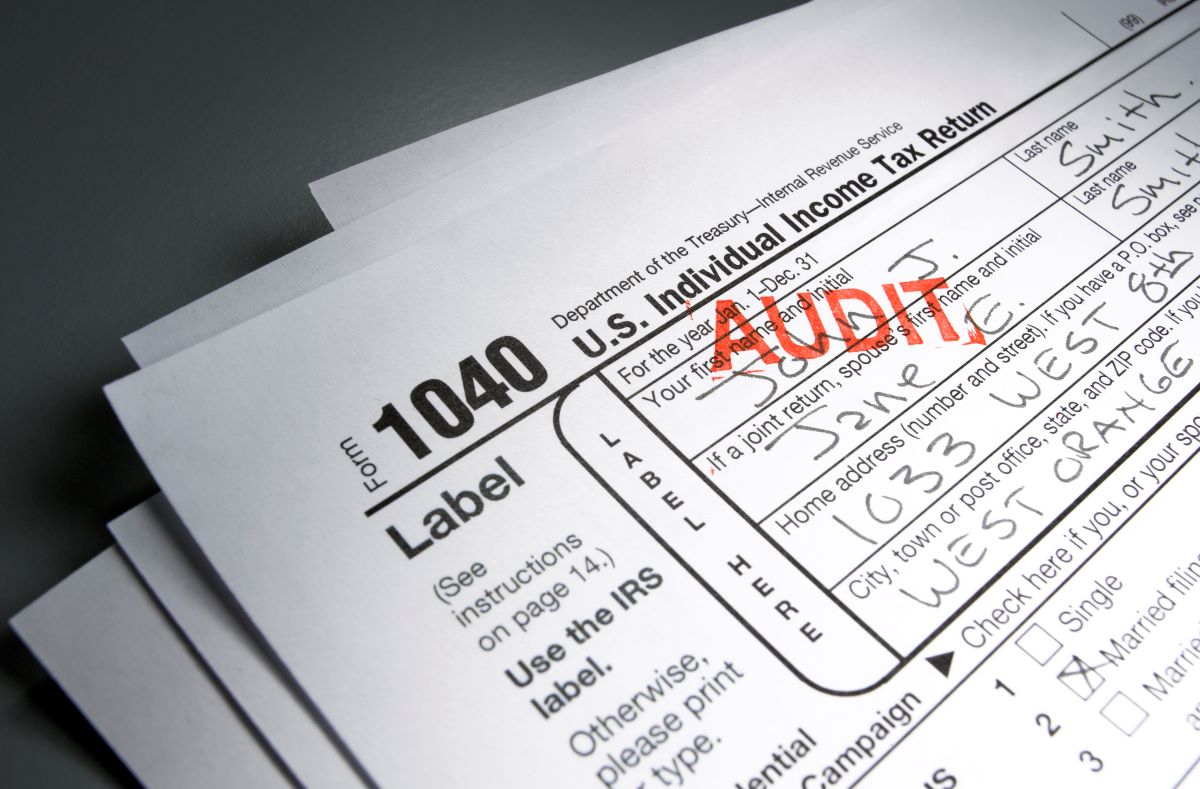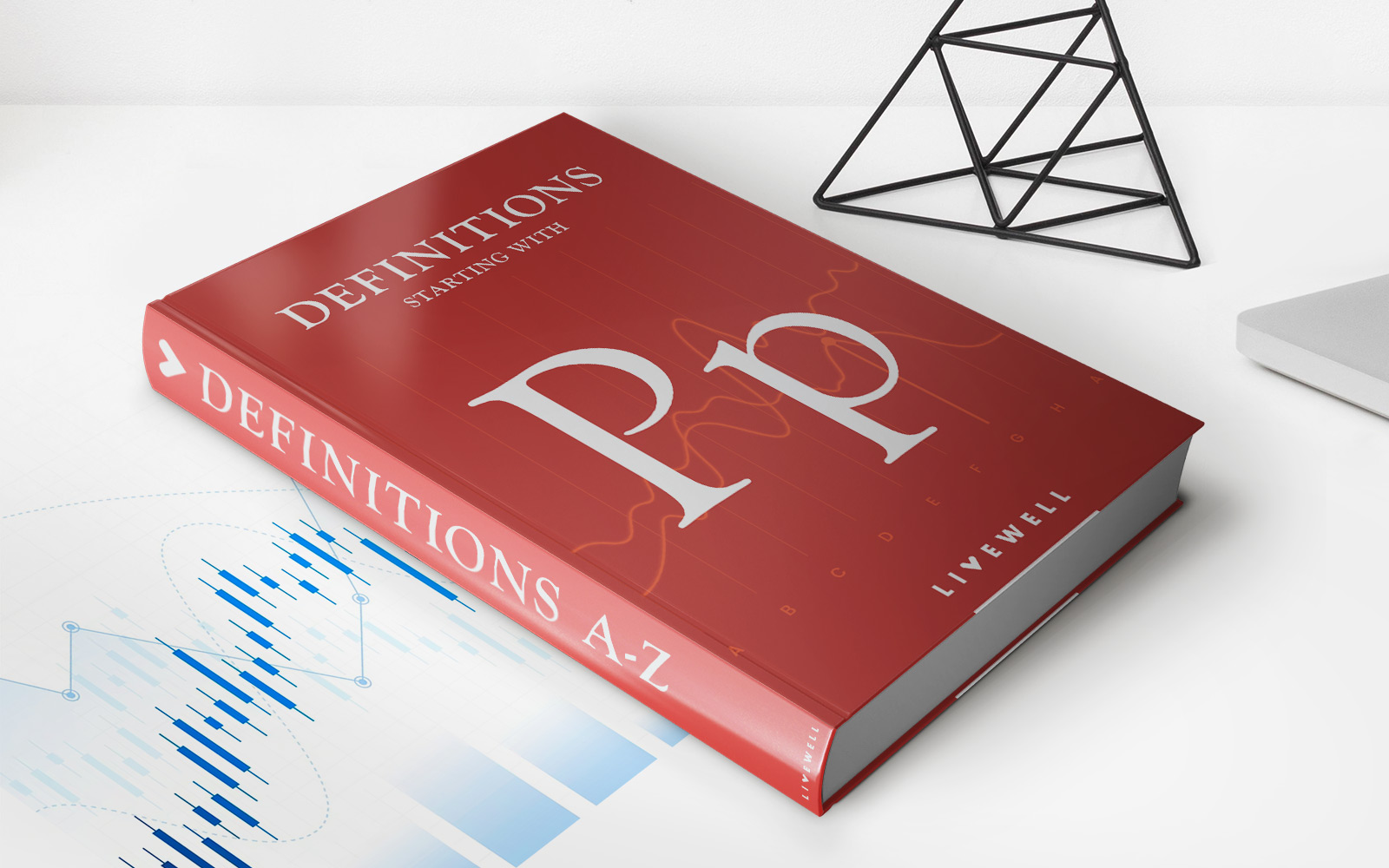

Finance
What Does An Auditor Do In Accounting
Published: October 6, 2023
Find out what an auditor does in the field of accounting and how they help ensure the accuracy and integrity of financial records. Explore the role of finance in auditing and the importance of this profession.
(Many of the links in this article redirect to a specific reviewed product. Your purchase of these products through affiliate links helps to generate commission for LiveWell, at no extra cost. Learn more)
Table of Contents
Introduction
When it comes to the world of finance and accounting, auditors play a crucial role in ensuring accuracy and integrity in financial reporting. An auditor is a professional who examines and evaluates financial records to ensure compliance with laws, regulations, and accounting standards. Their work is vital in providing assurance to stakeholders, including shareholders, investors, and regulatory bodies, that a company’s financial statements present a true and fair view of its financial position.
Auditing is an essential function in accounting that helps maintain transparency and trust in financial transactions. By conducting thorough assessments, auditors help identify discrepancies, errors, or potential fraud, providing companies with an accurate picture of their financial health.
In this article, we will delve into the role of an auditor in accounting and explore their key responsibilities in ensuring the accuracy and reliability of financial statements. Understanding the critical role that auditors play in the financial world will not only shed light on their importance but also give individuals and businesses a clearer understanding of the value they bring to the table.
Role of an Auditor in Accounting
The role of an auditor in accounting is multifaceted and goes beyond simply crunching numbers. Auditors serve as independent third parties who provide an objective assessment of a company’s financial records. Their primary function is to ensure that financial statements are prepared in accordance with applicable accounting standards and provide a true and fair representation of the company’s financial position.
One of the key roles of an auditor is to provide assurance on the reliability of financial information. They review and analyze financial records, transactions, and internal controls to identify any material misstatements or discrepancies. By doing so, auditors help safeguard against potential errors or fraudulent activities that could undermine the integrity of financial statements.
Auditors also play a vital role in maintaining the trust of stakeholders. Shareholders, investors, lenders, and regulatory bodies rely on the audit report to make informed decisions about the company. The auditor’s opinion carries weight and provides credibility to the financial information presented by the company.
Furthermore, auditors are responsible for assessing the overall financial health of the company. They evaluate the company’s financial performance, liquidity, solvency, and profitability. By thoroughly analyzing the financial statements and related information, auditors provide valuable insights into the company’s financial viability and potential risks.
Auditors also contribute to the improvement of internal controls and risk management within an organization. Through their audit procedures, they identify weaknesses in internal controls, make recommendations for improvements, and assess the effectiveness of risk management practices. This helps companies enhance their overall governance framework and minimize the risk of financial misstatements, fraud, and non-compliance with laws and regulations.
Overall, the role of an auditor in accounting is to provide an independent and expert opinion on a company’s financial statements and internal controls. They act as a watchdog, ensuring transparency, accuracy, and accountability in financial reporting. Their work is crucial in maintaining investor confidence, supporting sound decision-making, and upholding the integrity of the financial system as a whole.
Responsibilities of an Auditor
An auditor has a wide range of responsibilities when it comes to ensuring the accuracy and reliability of financial information. Let’s explore some of the key responsibilities that auditors undertake in their role:
- Planning the audit: Auditors are responsible for developing an overall audit strategy and plan. This includes understanding the business operations, assessing risks, and determining the scope and objectives of the audit.
- Collecting and analyzing financial data: Auditors gather and examine financial information such as balance sheets, income statements, cash flow statements, and supporting documentation. They assess the completeness, accuracy, and consistency of the financial data to identify any potential errors or irregularities.
- Testing internal controls: Auditors evaluate the effectiveness of the internal control systems in place within an organization. This involves examining policies, procedures, and processes to ensure they are designed and implemented effectively to mitigate risks and prevent fraud.
- Performing substantive procedures: Auditors carry out substantive procedures, such as detailed testing of transactions, to obtain sufficient evidence about the accuracy and validity of the financial statements. This involves analyzing samples of transactions, verifying balances, and reviewing supporting documentation.
- Identifying and assessing risk: Auditors identify and evaluate the risks that may impact the accuracy of financial statements. They assess factors such as financial market trends, changes in regulations, and the company’s internal control environment to determine the level of risk exposure.
- Evaluating accounting policies: Auditors review the company’s accounting policies and practices to ensure compliance with applicable accounting standards. They assess whether the chosen accounting methods are appropriate and consistently applied throughout the financial reporting period.
- Detecting fraud and irregularities: Auditors are trained to detect signs of fraud and irregularities. They look for any indications of fraudulent activities, such as fictitious transactions, manipulation of financial records, or misappropriation of assets. If red flags are identified, auditors investigate further to determine the extent of the fraud.
- Preparing audit reports: After completing the audit procedures, the auditor prepares a detailed report that provides an overview of the audit findings. This report includes an opinion on the reliability of the financial statements and highlights any significant issues or recommendations for improvement.
These are just a few of the many responsibilities that auditors undertake to ensure the accuracy and reliability of financial statements. By fulfilling these duties, auditors play a critical role in maintaining the trust and confidence of stakeholders while contributing to the overall transparency and integrity of the financial reporting process.
Conducting Audits
Conducting audits is a fundamental aspect of an auditor’s role. It involves the systematic examination and evaluation of financial records, transactions, and internal controls to ensure compliance with applicable standards, laws, and regulations. Let’s take a closer look at the process involved in conducting audits:
1. Planning: The auditor starts by planning the audit. This includes understanding the business operations, assessing risks, and developing an overall audit strategy and plan. The plan outlines the scope of the audit, the procedures to be performed, and the timeline for completion.
2. Gathering information: The auditor collects and analyzes financial data. This includes reviewing financial statements, supporting documentation, and relevant information about the company’s operations, policies, and procedures.
3. Assessing internal controls: The auditor evaluates the effectiveness of the company’s internal control systems. This involves examining the design and implementation of controls to ensure they mitigate risks and prevent errors or fraudulent activities. The auditor may perform tests of controls to verify their effectiveness.
4. Performing substantive procedures: The auditor carries out substantive procedures to obtain sufficient evidence about the accuracy and validity of the financial statements. This involves detailed testing of transactions, verifying account balances, and reviewing supporting documentation.
5. Analyzing financial statements: Once the audit procedures are complete, the auditor analyzes the financial statements. They look for any material misstatements, inconsistencies, or non-compliance with accounting standards. The auditor may also assess the overall financial health and performance of the company.
6. Identifying and addressing issues: If the auditor identifies any significant issues or discrepancies during the audit, they investigate further to determine the root cause and significance. The auditor may request additional information, perform additional testing, or seek clarification from management to resolve any concerns.
7. Documenting findings: The auditor documents their findings, including any material misstatements, inefficiencies in internal controls, or instances of non-compliance. These findings are recorded in the audit report, which provides a comprehensive overview of the audit procedures performed and the results obtained.
8. Reporting: After completing the audit, the auditor issues an audit report that communicates their findings to the company’s management and stakeholders. The report includes an opinion on the fairness of the financial statements, highlights any significant issues or recommendations for improvement, and provides assurance to users of the financial statements.
Conducting audits is a meticulous process that requires attention to detail, analytical skills, and a deep understanding of accounting principles and standards. By following a structured approach, auditors are able to ensure the accuracy and reliability of financial information, provide independent assurance to stakeholders, and contribute to the overall transparency and confidence in the financial reporting process.
Evaluating Financial Statements
One of the key responsibilities of an auditor is evaluating financial statements. Financial statements are crucial documents that provide a snapshot of a company’s financial performance, position, and cash flows. The auditor’s role is to carefully analyze these statements to ensure their accuracy and compliance with accounting standards. Let’s delve deeper into the process of evaluating financial statements:
1. Reviewing financial statement components: The auditor begins by examining the various components of the financial statements, including the balance sheet, income statement, cash flow statement, and statement of changes in equity. They assess the completeness and accuracy of each component, ensuring that all relevant information has been disclosed.
2. Verifying account balances: The auditor verifies the account balances presented in the financial statements. This involves reviewing supporting documentation and conducting tests to ensure the accuracy and validity of the reported amounts. The auditor may select sample transactions and verify their occurrence and proper accounting treatment.
3. Assessing accounting policies: The auditor evaluates the company’s accounting policies to ensure they comply with applicable accounting standards. They assess the appropriateness and consistency of these policies, ensuring that they are applied consistently across reporting periods.
4. Analyzing financial ratios and trends: The auditor analyzes financial ratios and trends to gain insights into the company’s financial performance and position. They may compare the current financial data with historical figures and industry benchmarks to identify any significant fluctuations or anomalies.
5. Detecting material misstatements: The auditor looks for material misstatements in the financial statements. This includes errors, omissions, or fraudulent activities that may impact the accuracy or fairness of the reported information. Auditors employ various procedures, including analytical review, substantive testing, and confirmation with third parties, to identify such misstatements.
6. Evaluating disclosure requirements: The auditor ensures that the financial statements comply with the disclosure requirements outlined in accounting standards. They review the accompanying notes and disclosures, assessing the adequacy and clarity of the information presented.
7. Providing professional judgment: In evaluating financial statements, auditors exercise professional judgment to assess the reasonableness of estimates and assumptions made by management. They consider the inherent uncertainties and complexities involved in financial reporting and provide an unbiased and objective assessment.
8. Reporting findings: After evaluating the financial statements, the auditor communicates their findings in the audit report. This includes expressing an opinion on the fairness of the financial statements and disclosing any significant issues or concerns identified during the evaluation process.
By rigorously evaluating financial statements, auditors contribute to the reliability and credibility of the financial information provided to stakeholders. They play a crucial role in ensuring that financial statements present a true and fair view of the company’s financial performance, which is essential for stakeholders to make informed decisions about the business.
Verifying Internal Controls
As part of their responsibilities, auditors are tasked with verifying internal controls within an organization. Internal controls are processes, policies, and procedures designed to safeguard a company’s assets, ensure the accuracy of financial records, and prevent fraud. By assessing and testing internal controls, auditors help ensure the reliability and integrity of financial information. Let’s explore the process of verifying internal controls:
1. Assessing control activities: Auditors evaluate the design and implementation of control activities within the organization. This involves reviewing policies and procedures related to areas such as authorization, segregation of duties, access controls, physical security, and supervision. Auditors assess whether these control activities are appropriate, effectively mitigating risks, and complying with industry standards.
2. Testing operating effectiveness: After assessing control activities, auditors perform testing to determine the operating effectiveness of internal controls. They select a sample of transactions and examine the relevant controls in place to ensure they are functioning as intended. This may involve reviewing documents, performing observations, interviewing employees, and carrying out analytical procedures.
3. Evaluating the control environment: The control environment refers to the overall tone and attitude set by management regarding internal controls. Auditors assess the control environment of the organization, including management’s commitment to integrity and ethical values, the competence of employees, the enforcement of accountability, and the establishment of risk management practices.
4. Identifying control weaknesses: If auditors identify weaknesses or deficiencies in internal controls, they report these findings to management. Control weaknesses can range from inadequate segregation of duties to vulnerabilities in information technology systems. Auditors provide recommendations for improvement, allowing management to address and strengthen control weaknesses.
5. Assessing the impact on financial reporting: Auditors evaluate the impact of control weaknesses on financial reporting. They determine whether the weaknesses could result in material misstatements in the financial statements and identify the extent to which the weaknesses may affect the accuracy and reliability of the financial information presented.
6. Providing management with recommendations: Auditors work closely with management to provide recommendations for enhancing internal controls. These recommendations may include implementing additional controls, revising existing policies and procedures, enhancing training programs, or strengthening oversight and monitoring mechanisms. The aim is to help management mitigate risks, improve the control environment, and ensure the reliability of financial reporting.
7. Ensuring compliance with regulations: Auditors verify that the internal controls within an organization comply with relevant laws, regulations, and industry standards. They assess whether the control activities are designed to address specific compliance requirements and ensure that the organization is taking appropriate steps to prevent non-compliance.
By verifying internal controls, auditors play a crucial role in bolstering the integrity of financial information, minimizing the risk of fraud, and promoting strong corporate governance. Their assessments provide assurance to stakeholders that the organization has robust control systems in place, which in turn enhances trust and confidence in the organization’s operations and financial reporting.
Assessing Compliance with Laws and Regulations
As part of their role, auditors have the responsibility to assess and ensure that companies comply with relevant laws and regulations. Compliance with laws and regulations is crucial to maintain ethical practices, protect stakeholders’ interests, and minimize legal and financial risks. Let’s explore the process of assessing compliance with laws and regulations:
1. Identifying applicable laws and regulations: Auditors begin by identifying the laws, regulations, and industry-specific requirements that are relevant to the company’s operations. This may include local, national, and international regulations, such as tax laws, labor laws, environmental regulations, and industry-specific guidelines.
2. Understanding the regulatory landscape: Auditors gain a comprehensive understanding of the regulatory landscape that governs the company’s operations. They stay updated on changes in laws and regulations to reassess the company’s compliance requirements and ensure that they are being met.
3. Evaluating internal control systems: Auditors assess the adequacy and effectiveness of the company’s internal control systems in ensuring compliance with laws and regulations. They review policies, procedures, and documentation related to compliance processes to determine if they are designed and implemented effectively.
4. Testing compliance with laws and regulations: Auditors perform testing to evaluate the company’s compliance with specific laws and regulations. This may involve examining transaction records, interviewing key personnel, reviewing contracts, analyzing financial statements, and verifying the company’s adherence to regulatory requirements.
5. Assessing risk of non-compliance: Auditors evaluate the risk of non-compliance by identifying areas where the company may be exposed to legal and regulatory risks. They consider factors such as industry-specific risks, new or evolving regulations, and potential consequences of non-compliance, such as financial penalties or reputational damage.
6. Reporting non-compliance issues: If auditors identify instances of non-compliance during their assessment, they report these findings to management. They provide recommendations for rectifying non-compliance issues and improving internal controls to prevent future occurrences.
7. Communicating with regulatory authorities: In certain circumstances, auditors may be required to communicate with regulatory authorities to ensure proper reporting of non-compliance issues. This may involve reporting illegal activities, potential fraud, or significant breaches of regulations to the appropriate authorities, as required by law.
8. Providing guidance on regulatory changes: Auditors also play a role in providing guidance to the company on regulatory changes. They assist management in staying abreast of new or revised laws and regulations that may impact the company’s operations, helping them adapt their practices to ensure compliance.
By assessing compliance with laws and regulations, auditors help companies operate within the legal framework, maintain ethical practices, and protect the interests of stakeholders. This process enhances the company’s reputation, minimizes legal and financial risks, and demonstrates commitment to good corporate governance.
Identifying Financial Risks
Identifying financial risks is a crucial task for auditors as they assess the overall risk profile of a company. Financial risks can significantly impact a company’s stability, profitability, and reputation. Auditors play a vital role in identifying and evaluating these risks to help management make informed decisions and implement effective risk management strategies. Let’s explore the process of identifying financial risks:
1. Assessing the business environment: Auditors begin by analyzing the macroeconomic and industry-specific factors that may pose financial risks to the company. This includes evaluating trends, market conditions, regulatory changes, and potential disruptions that could adversely affect the company’s financial position.
2. Evaluating internal controls: Auditors review the company’s internal controls to identify any weaknesses that may expose the company to financial risks. Inadequate controls in areas such as revenue recognition, cash management, inventory management, or procurement processes can lead to financial misstatements or fraud.
3. Analyzing financial statements and ratios: Auditors examine the company’s financial statements and ratios to identify potential risks. They look for signs of financial distress, such as declining profitability, increasing debt levels, liquidity issues, or excessive reliance on a specific customer or market segment.
4. Assessing credit and liquidity risks: Auditors evaluate the company’s creditworthiness and liquidity position. They analyze the credit risk exposure to customers, suppliers, or financial institutions, and assess whether the company has sufficient liquidity to meet its short-term obligations.
5. Examining market and competitive risks: Auditors consider market and competitive risks that may impact the company’s financial performance. This includes analyzing the company’s positioning within the market, competitive threats, pricing pressures, and potential changes in consumer behavior or preferences.
6. Identifying operational risks: Auditors also look for operational risks that may have financial implications. These risks can arise from inefficiencies in operations, inadequate supply chain management, technology vulnerabilities, or disruptions in key processes that affect the company’s financial performance.
7. Evaluating regulatory and compliance risks: Auditors assess the company’s exposure to regulatory and compliance risks. They identify potential non-compliance with laws, regulations, and industry standards that could result in penalties, legal issues, or reputational damage.
8. Considering foreign exchange and interest rate risks: If the company engages in international transactions or has significant borrowing, auditors evaluate the exposure to foreign exchange rate fluctuations and interest rate risks. They assess how these risks may impact the company’s financial results and develop strategies to manage or mitigate them.
By identifying financial risks, auditors provide valuable insights to management, enabling them to make informed decisions and implement appropriate risk management strategies. This process helps safeguard the company’s financial stability, protect shareholder value, and enhance long-term sustainability.
Reporting Audit Findings
Reporting audit findings is a critical step in the auditing process. Auditors are responsible for communicating the results of their audit procedures to management, shareholders, regulatory bodies, and other stakeholders. The audit report provides transparency and assurance regarding the accuracy and reliability of the financial statements. Let’s explore the process of reporting audit findings:
1. Scope and objective of the audit: The audit report begins by stating the scope and objective of the audit. It provides a brief overview of the audit procedures performed and the period covered by the audit.
2. Opinion on the financial statements: The auditor expresses their opinion on the fairness of the financial statements. This is typically done by issuing one of the following opinions: unqualified opinion (the financial statements are presented fairly), qualified opinion (adequate except for specific matters), adverse opinion (material misstatements), or disclaimer of opinion (inability to obtain sufficient evidence).
3. Key audit findings: The audit report includes a summary of the significant audit findings. This may include material misstatements, control deficiencies, non-compliance with laws and regulations, or other issues identified during the audit. The findings are usually presented in a clear and concise manner for easy understanding by the intended audience.
4. Recommendations for improvement: Auditors provide recommendations to address the issues identified during the audit. These recommendations aim to improve internal controls, enhance financial reporting processes, or strengthen compliance with laws and regulations. The recommendations are tailored to the specific circumstances of the company and provide guidance on how to mitigate identified risks.
5. Management’s response: In some cases, the audit report may include management’s response to the audit findings and recommendations. The response outlines the actions management intends to take to address the identified issues and improve the company’s financial reporting and control environment.
6. Other required disclosures: Depending on the jurisdiction and reporting requirements, the audit report may include additional disclosures. This can include information about the auditors’ independence, limitations of the audit, and any other relevant matters specified by the regulatory or legal framework.
7. Communication with governance bodies: Auditors may communicate directly with governance bodies, such as the company’s board of directors or audit committee, to discuss the audit findings in-depth and provide additional insights or recommendations.
The audit report is the culmination of the auditor’s work and provides valuable information to various stakeholders. It ensures transparency, promotes accountability, and enhances the credibility and confidence in the financial statements. Furthermore, it serves as a tool for management to identify areas for improvement and strengthen internal controls, ultimately contributing to the overall soundness of the company’s financial reporting process.
Conclusion
Auditors play a vital role in the realm of finance and accounting, ensuring accuracy, transparency, and compliance in financial reporting. Their responsibilities encompass conducting audits, evaluating financial statements, verifying internal controls, assessing compliance with laws and regulations, identifying financial risks, and reporting audit findings.
Through their expertise and meticulous examination of financial records, auditors provide assurance to stakeholders that the financial statements present a true and fair view of the company’s financial position. They assess the effectiveness of internal controls, identify areas of non-compliance, and offer recommendations to strengthen controls and mitigate risks. Auditors contribute to maintaining ethical practices, enhancing transparency, and fostering good corporate governance.
By carefully evaluating financial statements, auditors ensure accuracy, reliability, and compliance with accounting standards. They assess the company’s financial health, analyze trends and ratios, and identify material misstatements or inconsistencies. Through their verification of internal controls, auditors bolster the company’s ability to safeguard its assets and prevent fraud.
Auditors also play a vital role in assessing compliance with laws, regulations, and industry-specific requirements. They systematically evaluate the company’s adherence to legal obligations, identifying any non-compliance issues and recommending corrective measures. Additionally, auditors identify and evaluate financial risks that may impact the company’s stability, profitability, and reputation. Their insights aid management in making informed decisions and implementing effective risk management strategies.
Ultimately, auditors report their findings and express their opinion on the fairness of the financial statements. The audit report is a crucial document that provides transparency, assurance, and guidance to stakeholders. It communicates significant audit findings, recommendations for improvement, and management’s response. The audit report promotes accountability, enhances confidence, and supports the overall integrity of the financial reporting process.
In conclusion, auditors play a vital role in maintaining trust, integrity, and accuracy in financial reporting. Through their expertise and comprehensive evaluation of financial records, they contribute to the stability and transparency of the financial system. The work of auditors is essential in ensuring the reliability of financial information and upholding the highest standards of corporate governance.














